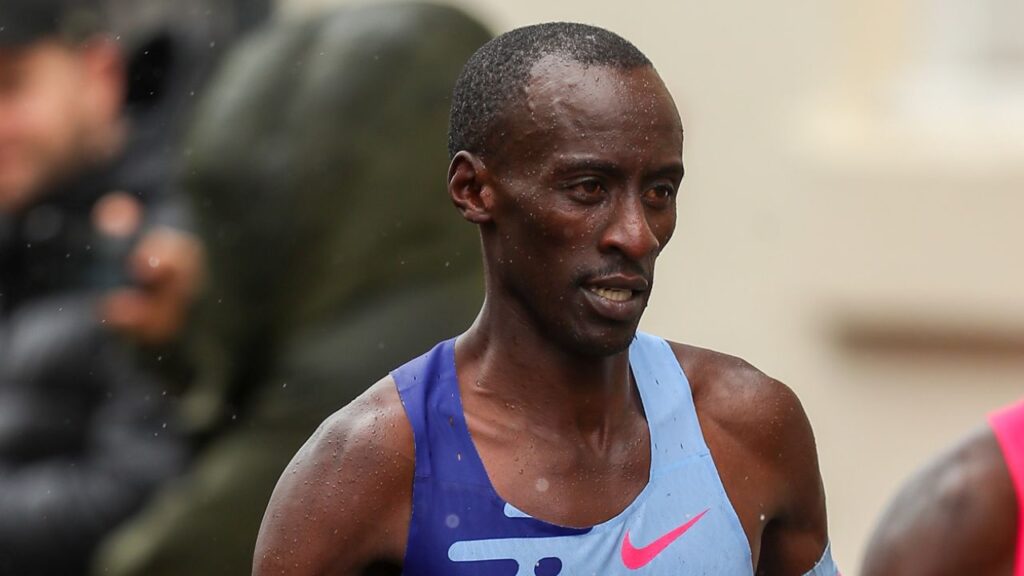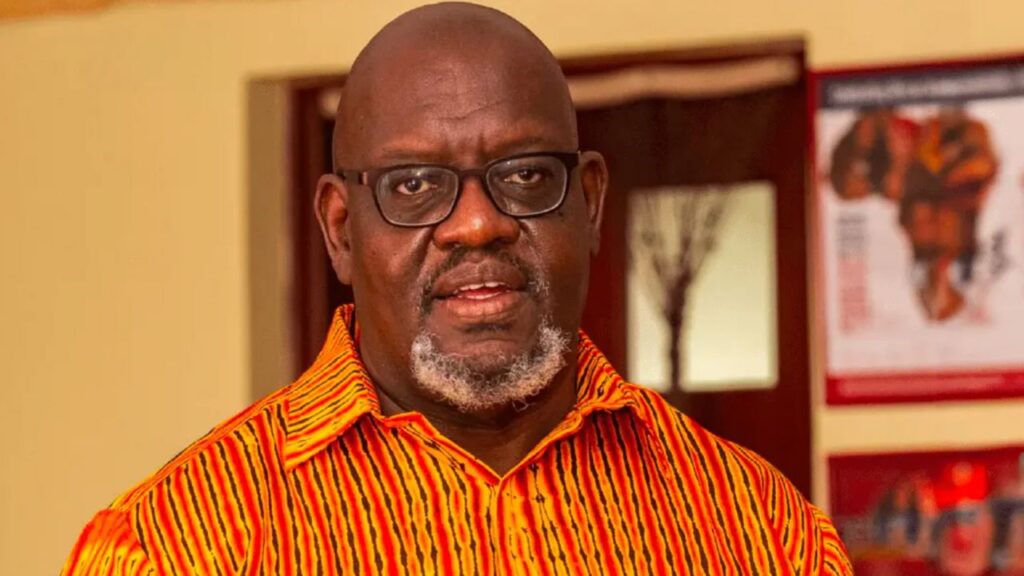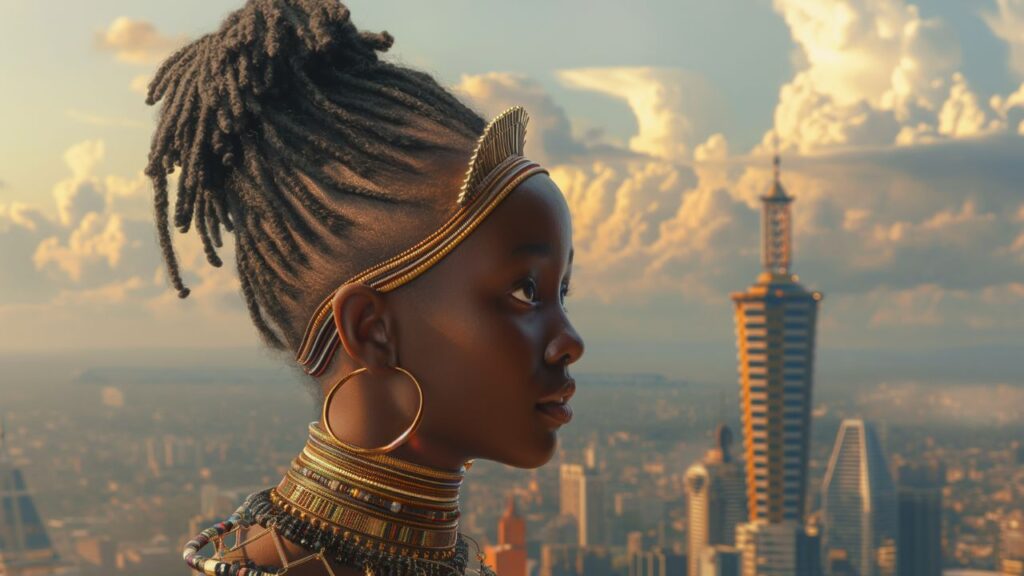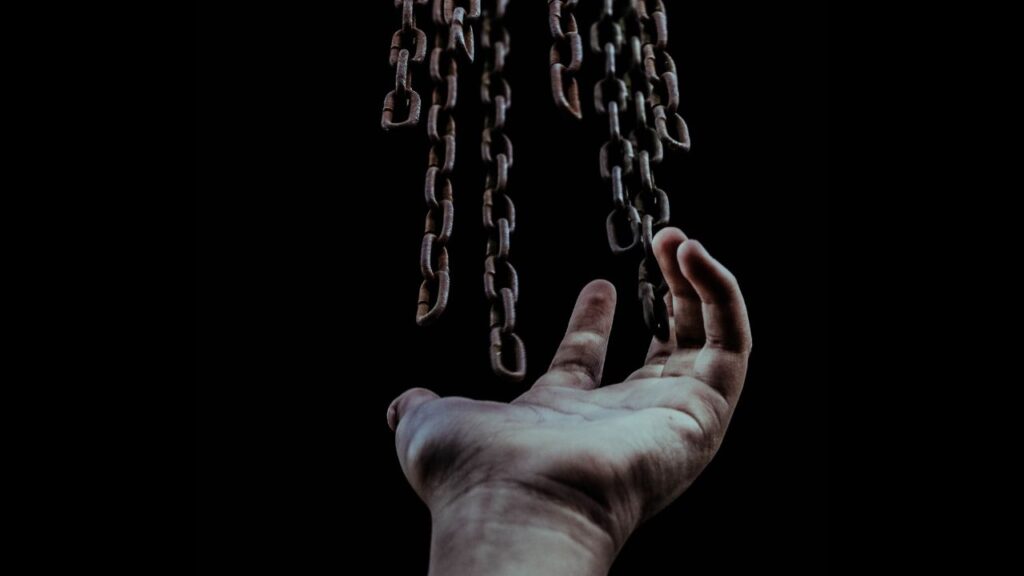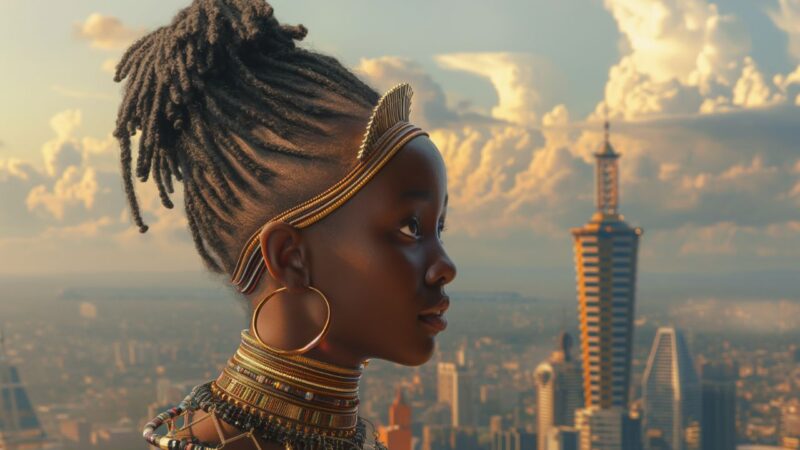In the early noughties, I was working on a project to publish a lifestyle magazine that my team called Miro. “Miro”, deriving from “Amero” or African American, is a word that urban Nairobians of yore used to describe black people. We were hoping to come up with the first urban lifestyle magazine in which Nairobians would see themselves represented as they did in the Ebony and Essence Magazines published in the US.
During that period, I met a guy named Peter Achayo who had a clothing label and believed in what we were doing. He also knew some other guys doing something similar but their focus was mainly literary. He offered to make the introduction and in early 2005, I met the leader of that group, Binyavanga Wainaina, at the Java Coffee House on Mama Ngina Street, a dreadlocked, dark-skinned, heavyset fellow of medium height, sitting in the company of several people. We sat at a booth where I explained to him what my team and I were doing and trying to achieve. He listened keenly, offering several suggestions which I noted. Binyavanga told me that Ghanaian writer Ayi Kwei Armah, who wrote The Beautyful Ones Are Not Yet Born, was in town at his invitation and wondered if an interview with him would be useful. I jumped at the opportunity as I had read the book as a teenager and rated the writer highly.
On the day of the interview, I made my way to Lillian Towers, aka the Nairobi Safari Club, where Binyavanga had me sit at the lobby and wait to meet the great writer. At the time, our magazine Miro hadn’t seen the light of day but he was willing to accord me the same respect that I had seen accorded to journalists who had been around for a while. That respect was something that I carried with me into a career as someone who catalogued the lives of those whom I met. For Armah it was probably just another interview but it forever changed my perception of what being African was.While our efforts at creating a publication failed only months later, I cherished the meetings I had had with this guy with a weird name and with the famous writer from Ghana.
A year later, I founded a new website/blog called NairobiLiving.com (since discontinued) to catalogue a city that was evolving in multiple ways. Some of the hottest gigs at the time were the monthly Kwani Open Mics, an even which was first hosted at the Yaya Centre and later at Club Soundd on Kaunda Street. My reviews of the Kwani Open Mic events got me an invitation to the East African Writers Summit at Lukenya in 2006 organised by Kwani Trust because I was cataloguing the literary revolution that was taking place.
My life was a mess when I received that invitation. My mother had invested a huge sum of money to ensure that I received the best private university education. I had left the country for a year and a half and returned floundering. I was a thirty-one-year old man with no income who had moved back to live with his parents. The magazine project that I had initiated had failed spectacularly and I was desperately looking for something to fill that void both as a career and for income.
I attended the Lukenya writers’ summit and adopted a sort of mute position, one that I would adopt for many years to follow where Binyavanga was concerned. I sat and listened in on the panel discussions by day and, in the evenings, on the conversations that took place by the campfire over copious amounts of alcohol. Listening to Binyavanga, Yvonne Adhiambo Owuor and others discussing the challenges and the opportunities in their writing careers had a marked influence on my life. Binyavanga spoke about the need to write back to the European canon, challenging the writing that defined Africa from the likes of Ernest Hemmingway and Joseph Conrad. It was an amazing opportunity for someone seeking purpose in life. That weekend was a turning point for me and I committed to this writing world fully in the months and years that followed.
In making this commitment, I got to know more about this dude who went by the name Binyavanga—or The Binj, or Binya to the many who knew him in the African creative community—and who was central to my making such a life-altering decision. Over the years of a glittering career, his work was featured in many of the world’s most famous publications. Starting with G21, the magazine which had featured his award-winning short story Discovering Home, his work could be read in Chimurenga, Virginia Quarterly Review, Granta, The East African, National Geographic, New York Times, Transition, Bidoun, Harper’s Magazine, The Guardian, Africa is A Country, Jalada, Bomb, etc. At one point he had a regular column in the South African newspaper Mail & Guardian.
The year I met him, Binyavanga’s essay How To Write About Africa, satirising how European writers talk about our continent, was published in Granta. That essay reminded me of sitting around a campfire listening to him railing against those who brought Africa and Africans to disrepute with their writing. It became one of the most shared pieces of writing in that respected literary journal and brought him worldwide fame.
His 2011 memoir One Day I Will Write About This Place was his personal contribution to the canon. It was a memoir of his middle class childhood in his Nakuru hometown, his time as a student in South Africa and, after he return home, his travels across the world. The book, which was favourably reviewed, made it onto Oprah’s 2011 Summer Reading List . It was The Binj at his best, showing what English could become in the ownership of a writer with his singular talents.
Also memorable was I’m A Homosexual Mum which was published in Africa Is A Country in 2014 when Binyavanga came out as gay. At the time, several African countries including Nigeria and Uganda were either drafting or passing new laws that would make it very difficult for gay people to be who they were. Outing himself in this “lost chapter of his memoir” and following it up with a series of videos that outlined his views on what was happening to the social fabric of the continent was a revolutionary act.
While his own writing career was significant, his biggest contributions came from his ability to influence others with his larger-than-life personality, his compassion and his sheer determination. It started with the winnings from the Caine Prize, part of which he used to set up the Kwani Trust, jolting the literary establishment in Kenya and across the continent. Before he showed up, there was no Kenyan literature in the true sense of the word as, for a quarter of a century, the industry had been hobbled by anti-intellectual dictator Daniel Arap Moi. At the time the publishers association was a text book lobby that focused mainly on selling books to school children while onn the continent, there was a lull in African writing after the glory years of the Heinemann African Writers Series in the 1960s and 70s.
The appearance of Binyavanga Wainaina signified a shift not only in Kenya but across the continent. After many years of inactivity, the “literary desert” got a new lease of life with the publishing of the literary journal Kwani? (which in Kenyan slang means “so what?”). That journal gave us the next winner of the Caine Prize, Yvonne Adhiambo Owuor. In the years that followed, the journal introduced many writers to the African literary community like the aforementioned Yvonne Adhiambo Owuor, Parselelo Kantai, Muthoni Garland, Dayo Forster, Billy Kahora, Andia Kisia, and many more that became the foundation of the literary community that we all look up to today.
With Binyavanga editing Kwani?, he challenged the idea of what literature looked like, what it sounded like or even in what language it was expressed. Experimentation was the name of the game and nothing demonstrated this as well as his association with Ukoo Flani Mau Mau which many considered the biggest hip hop group to come out of Kenya. Led by the inspirational Kama (Kamau Ngigi), young artists who came mainly from Dandora could be spotted at the Kwani? offices huddled around an office assistant who was typing their poetry and other musings. These musings, written in Sheng—a constantly evolving urban language made up of Kiswahili, English and many other Kenyan languages—ended up in the journal much to the consternation and fury of those in academia who considered themselves the arbiters of good literature.
When not ensuring that their work was immortalised in his preferred literary medium, Binyavanga also influenced the young artists as the executive producer of the 2016 Dandora Burning album. He raised money for studio time as well as for living expenses for the artists who featured on the album like Juliani, Kitu Sewer, and a whole host of others.
It wasn’t just experimenting with language that became a trademark of the journal under The Binj. Stories refused to follow any familiar patterns, with fiction, nonfiction and poetry mixed in with everything one could imagine, being published in the smaller version Kwanini when the journal wasn’t in publication. For a long time, there had been a yearning for something new and exciting and the breath of fresh air that was Kwani? was welcomed by those who had been rejected elsewhere. There was now a new space in which to showcase their talent. The new methods were however not as welcomed by those in publishing and academia, with one commentator famously calling the Kwani? writers “literary gangsters”.
One of the methods that the Kwani?, team employed to share their work with the Nairobi audience was the Kwani Open Mic. At the beginning, the events were hosted away from the Central Business District at the Yaya Centre Café Crème and at Kengeles in Lavington. Writers would read from their current or forthcoming entries to the Kwani? Journal, the readings interspersed with poetry and music including from the aforementioned hip hop artists who were part of Ukoo Flani Mau Mau. The open mic events were a occasions where some of the city’s well-heeled residents met some of the least well off, continuing on a theme that had been prevalent in the wake of the 2002 “revolution” where everything was possible without Dictator Moi; even the rich could sit with the Dandora boys.
The open mic events eventually moved to Club Soundd which was located in the Central Business District. People coming to Club Soundd had convenient access to public transport until the late hours and so more people attended and stayed longer. The events became a spectacle, with the person on stage having to be extremely compelling with whatever poetry, prose, or rap they were presenting or else the audience would switch off and turn to conversation with whoever they were with. Showtime at the Apollo had the Sandman; Kwani Open Mic had a crowd that became easily bored and tuned out.
As the years went by, it became the stage on which many of the poets of the last decade and a half cut their teeth. It was an important space for the community of the arts to get together and meet every first Tuesday of the month. From these events, many relationships, both professional and personal, were forged that endure to this day. That open mic spawned what became Nairobi’s vibrant poetry scene.
Eventually, Binyavanga had to leave the day-to-day running of the organisation to other people as he took up writing gigs “in the abroad”. He was the writer-in-residence at Union College in Schenectady, New York, in 2007 and in 2008, at Williams College, in Massachusetts. He then became director of the Chinua Achebe Centre for African Writers and Artists at Bard College, New York state. While not physically present at the organisation, Binyavanga sat on the board, giving valuable energy and input.
The organisation he once led came up with the Kwani Manuscript Project in 2011 to identify the next big writing stars from the continent and it delivered the motherload. The shortlist from the hundreds submitted included the manuscripts of Ayobami Adebayo’s Stay with Me, Ayesha Harruna Attah’s Saturday’s People, Toni Kan’s The Carnivorous City, Jennifer Nansubuga Makumbi’s The Kintu Saga, and Saah Millimono’s One Day I Will Write About This War. The Kwani? Manuscript Prize was ultimately won by Jennifer Nansubuga Makumbi, arguably the biggest starin Ugandan writing today.
Binyavanga was involved in other projects with varying degrees of success. In 2010, he led a team of writers in the Pilgrimages project where 14 African writers travelled to 13 African cities and to one city in Brazil to explore the complexities of disparate urban landscapes. From this experience, the writers were to create 14 works of non-fiction about their trips, capturing each city against the backdrop of Africa’s first World Cup. In the list of writers were Chris Abani, Doreen Baingana, Uzodinma Iweala, Alain Mabanckou, and Yvonne Adhiambo Owuor. The much-hyped works never saw the light of day; even the charismatic Kenyan couldn’t always deliver on the hype.
The Binj did deliver on many other occasions though. One of these was the Hay Festival/World Book Capital Africa39 list, a project to identify the writers, under 40 years of age, most likely to influence African writing in the future. That project, for which Binyavanga did most of the initial research, gave us a list of writers who would theoretically influence African writing in the future. Many on that list like Chimamanda Ngozi Adichie, Lola Shoneyin, Abubakar Adam Ibrahim, Shadreck Chikoti, Novuyo Rosa Tshuma, and Zukiswa Wanner continue to live up to its premise. Binyavanga was also the biggest supporter of the 24 Nairobi book project which showcased Nairobi as a modern African city through the eyes of its own photographers.
Away from his hits and misses, Binyavanga was plagued by illness in the last few years of his life, suffering a major stroke in 2015 from which he never truly recovered. He announced that he was HIV positive in 2016 and battled with his body until it all ended on the evening of May 21, 2019.
There were two Binyavanga Wainainas; the man before and the man after the 2015 stroke. After he recovered, Binya as I knew him, was not the the same force of nature that he had been. The man who was clumsy in an endearing sort of way was now having that clumsiness seep into all of his life, and it showed. He spent many hours on social media sharing whatever he was thinking and doing while getting into unnecessary virtual battles with perceived or real enemies.
The Binyavanga I wanted to remember was The Binj of before 2015 who showed up one day and changed the game by sheer force of will. I remember meeting him two weeks after being hired as an editor at the Star newspaper in Nairobi in 2011 and was invited to his birthday party where we chatted and he encouraged me, reminding me just how important the work that I did was. This coming from him was a boost that drove me for a long time. I knew that, being in an influential space, I had to ensure that the literary arts occupied their place of honour in Kenya.
We met on and off over the next few years until he was hospitalised by illness. His last words to me were, “You’ve grown a beard”. I laughed and said, “Yes”. They were the last words we shared.
The last time he was at my house, he took a nap in my living room then woke up and dominated the conversation at the smoking area at the backyard. I could tell that he could be a bit frustrated with his speech but he still held his own on in a wide variety of topics. That night showed me the best and the not-so-great of the great man. Being down because of a physical challenge but still coming to the conversation, opening with his signature, “you knowwwww…”
Thank you Binya. You saved me, and many like me.
Rest in Peace Binya. Rest in Power.
You can find a gallery of Binyavanga Wainaina’s writing at PlanetBinya.org.


